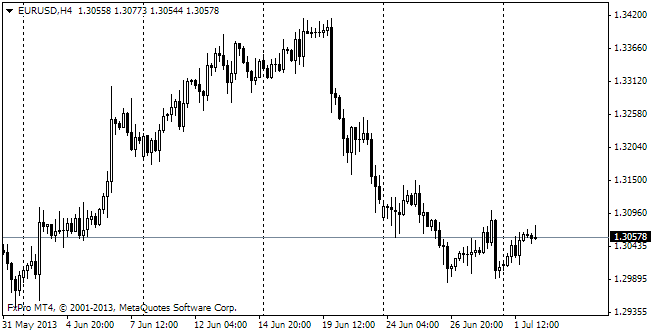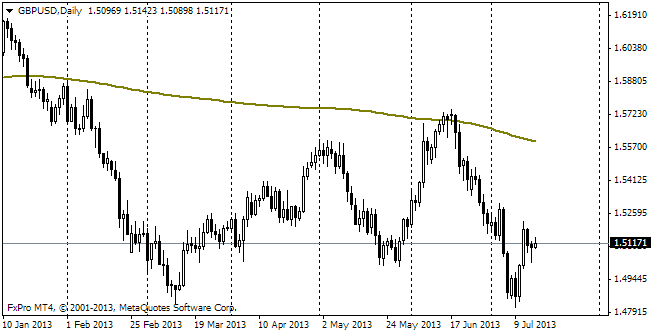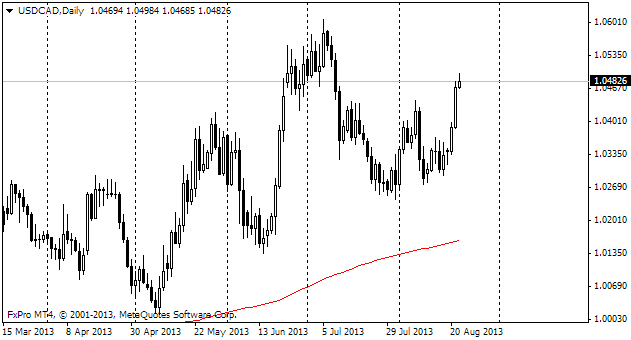EUR/usd
The euro kept appreciating even during the holiday trading session for Americans. The single currency remains in demand due to expectations of favourable EU statistics. A month before the sudden decline in inflation gave rise to hopes for the possible rate cut by the ECB and other incentives. As a result, the benchmark interest rate was reduced, which dealt a blow to the single currency. By now the euro has overcome the consequences of the heavy selling aroused by the rate cut and by the claims of the ECB officials that the council was considering negative rates as further incentives. Anyway, the decline boosted by the inflation data isn't played out yet. Then eurusd tumbled down from 1.3780 to 1.3480. Today we'll again get preliminary data on inflation in the eurozone. And yesterday we got inflation statistics for Germany. The published rate proved to be a bit higher than expected. The annual inflation grew from 1.2% to 1.3%. In general, this rise can hardly be called impressive, but anyway it doesn't allow speaking about the tendency for price decrease. Actually prices grew by 0.2% over the month. Yesterday we also received stats on the Spanish GDP growth. The final data were slightly revised up and indicate the decrease by 1.1% y/y in the third quarter instead of 1.2%. It's interesting that for all that the market didn't focus its attention on the German employment statistics. The November report has shown that unemployment grew by 10K against the expected zero. This indicator has been growing for four months in a row. And this is 55K more than a year ago. How does unemployment growth occur along with six-year highs of the consumer confidence index, moreover due to increase in salary expectations? Now for us it is a mystery, which can be explained only by stats on the employment volume, but such data are collected only for the part-time employed. On the whole we see how asymmetrically the market interprets the data, giving a higher priority to the statistics on business and consumer sentiments and overlooking the real state of affairs in the economy. It's true that data on the sentiments often prove to be a perfect leading indicator, but it is also true that future spending is determined by the number of available jobs rather than salary expectations.

GBP/USD
The pound feels at large. Having broken the resistance, which was holding for a long time (1.6250), it continued storming new highs. By now the sterling has risen to 1.6370. Last time it was that high in August 2011. Another factor softly boosting growth was, in our opinion, Mark Carney's speech about ending incentives for mortgage lending. Now FLS will be supporting industrial enterprises and small business. Though mortgage lending didn't play the main role in the formation of the housing market bubble, this tapering in 2014 signals clearly what the BOE and the British government are heading for. They prefer to avoid further blowing of the housing market bubble. The next move rests with the government, also stimulating the mortgage lending.

USD/JPY
The Japanese skeptics have received another proof that they are right. The country's inflation didn't grow in October. The annual CPI remained at 1.1%. Household spending rose just by 0.9% y/y against the expected 1.2%. However, it is favourable for the Japanese market that Tokyo prices have grown in November and that the yen keeps appreciating. Last night the pair got close to 102.60.

USD/CAD
Investment banks one after another release their bullish yearly forecasts for usdcad. They expect that closeness of the pair to the key resistance level of 1.06 will ensure further growth to the 1.11-1.14 area. Their bullish sentiment is confirmed by the ascending support line, lasting since last August. And it is all fault of the growing energy independence of the USA, which does harm to Canada regarding both exports and inflow of capital into these sectors.
